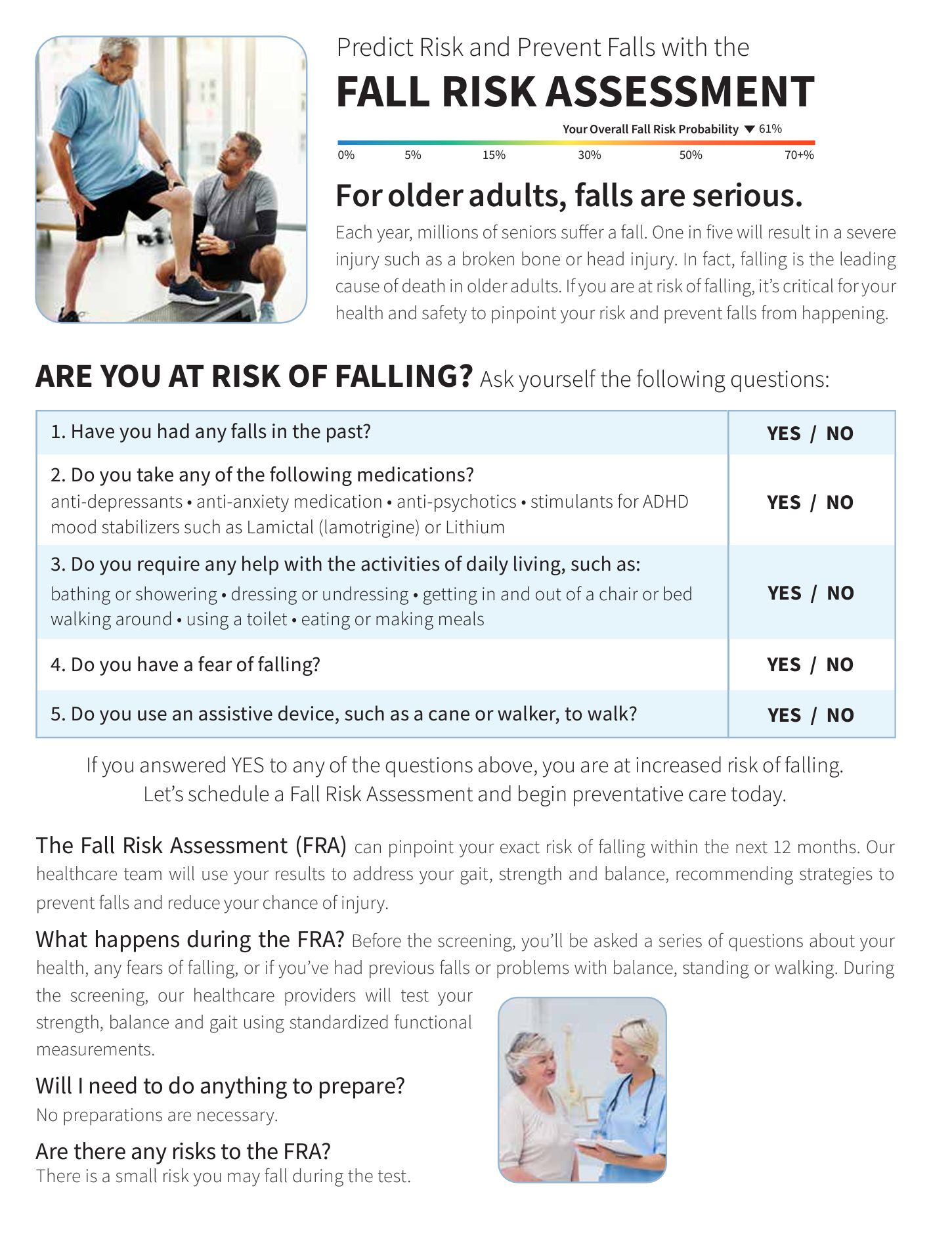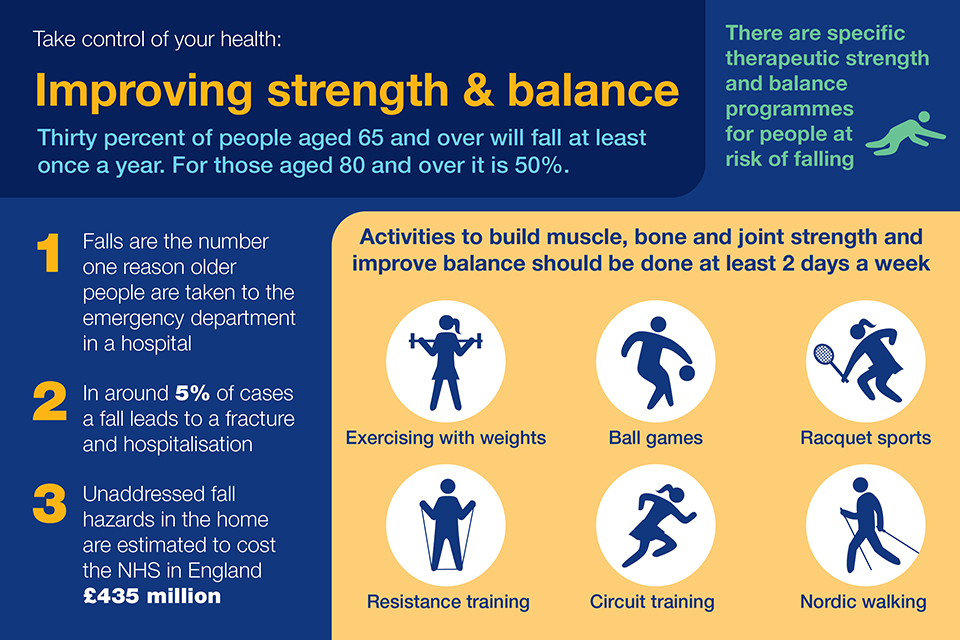The Ultimate Guide To Dementia Fall Risk
Table of ContentsThe 20-Second Trick For Dementia Fall RiskDementia Fall Risk Fundamentals ExplainedSome Ideas on Dementia Fall Risk You Need To KnowTop Guidelines Of Dementia Fall Risk
A fall risk evaluation checks to see just how most likely it is that you will drop. It is mostly provided for older grownups. The analysis typically consists of: This includes a collection of inquiries about your total wellness and if you've had previous drops or problems with equilibrium, standing, and/or walking. These devices examine your stamina, equilibrium, and stride (the means you walk).Treatments are recommendations that may minimize your threat of falling. STEADI consists of 3 steps: you for your threat of dropping for your risk elements that can be enhanced to attempt to protect against falls (for instance, equilibrium issues, damaged vision) to decrease your threat of dropping by using reliable techniques (for instance, providing education and resources), you may be asked numerous concerns including: Have you fallen in the past year? Are you worried regarding dropping?
If it takes you 12 secs or even more, it might suggest you are at higher risk for an autumn. This examination checks stamina and balance.
The placements will certainly obtain tougher as you go. Stand with your feet side-by-side. Relocate one foot midway onward, so the instep is touching the big toe of your other foot. Relocate one foot completely in front of the other, so the toes are touching the heel of your various other foot.
A Biased View of Dementia Fall Risk
Many drops take place as a result of several adding factors; for that reason, managing the risk of dropping starts with determining the elements that add to drop threat - Dementia Fall Risk. A few of one of the most pertinent threat aspects include: History of previous fallsChronic medical conditionsAcute illnessImpaired stride and balance, reduced extremity weaknessCognitive impairmentChanges in visionCertain risky medications and polypharmacyEnvironmental elements can also raise the threat for falls, consisting of: Insufficient lightingUneven or harmed flooringWet or unsafe floorsMissing or harmed hand rails and grab barsDamaged or poorly equipped tools, such as beds, mobility devices, or walkersImproper use assistive devicesInadequate supervision of the people living in the NF, consisting of those that show aggressive behaviorsA effective autumn danger management program requires a detailed clinical evaluation, with input from all members of the interdisciplinary team

The treatment strategy must also include interventions that are system-based, such as those that promote a safe atmosphere (suitable illumination, hand rails, get hold of bars, and so on). The performance of the interventions should be examined regularly, and the treatment strategy revised as needed to show changes in the autumn danger evaluation. Implementing a fall danger administration system making use of evidence-based finest practice can decrease the frequency of drops in the NF, while limiting the capacity for fall-related injuries.
Get This Report about Dementia Fall Risk
The AGS/BGS standard suggests evaluating all adults matured 65 years and older for autumn danger every year. This screening consists of asking clients whether they have actually fallen 2 or more times in the previous year or sought medical interest for an autumn, or, if they have actually not fallen, whether they feel unstable when strolling.
Individuals that have dropped when without injury must have their balance and gait assessed; those with gait or balance problems should get additional evaluation. A history of 1 loss without injury and without stride or balance troubles does not require further assessment past continued annual loss risk screening. Dementia Fall Risk. A loss threat evaluation is called for as component of the Welcome to Medicare exam

The 9-Second Trick For Dementia Fall Risk
Recording a drops background is among the quality indicators for fall avoidance and management. An important component of danger assessment is a medication review. Several courses of drugs increase fall danger (Table 2). copyright medications specifically are independent predictors of drops. These medicines tend to be sedating, modify the sensorium, and hinder balance and gait.
Postural hypotension can typically be minimized by minimizing the dosage of blood pressurelowering drugs and/or quiting medicines that have orthostatic hypotension as a side effect. Usage of above-the-knee support pipe and copulating the head of the bed boosted may additionally minimize postural reductions in high blood pressure. The advisable aspects of a fall-focused physical examination are shown in Box 1.

A TUG time higher than or equal to 12 secs suggests high fall danger. Being not able to stand up from a chair of knee elevation without making use of one's arms indicates enhanced autumn risk.